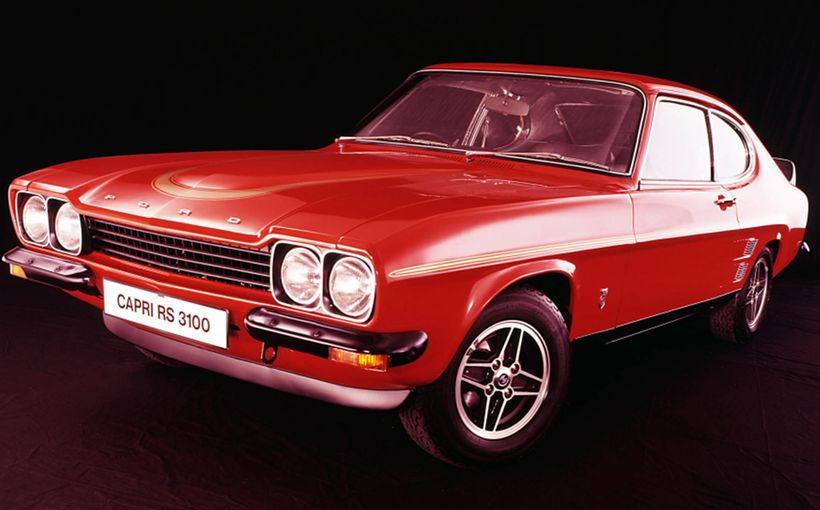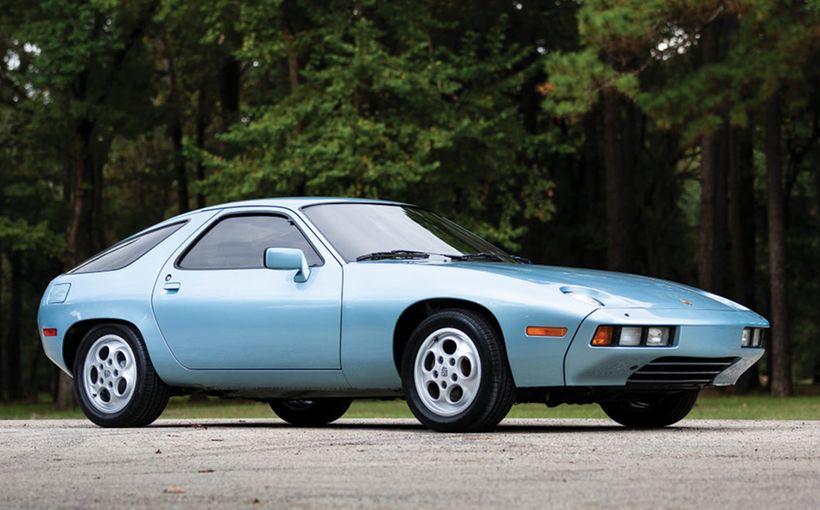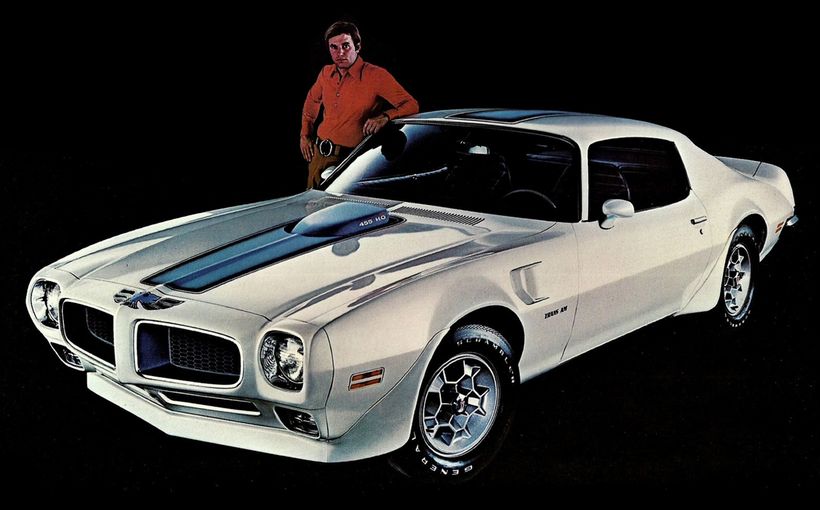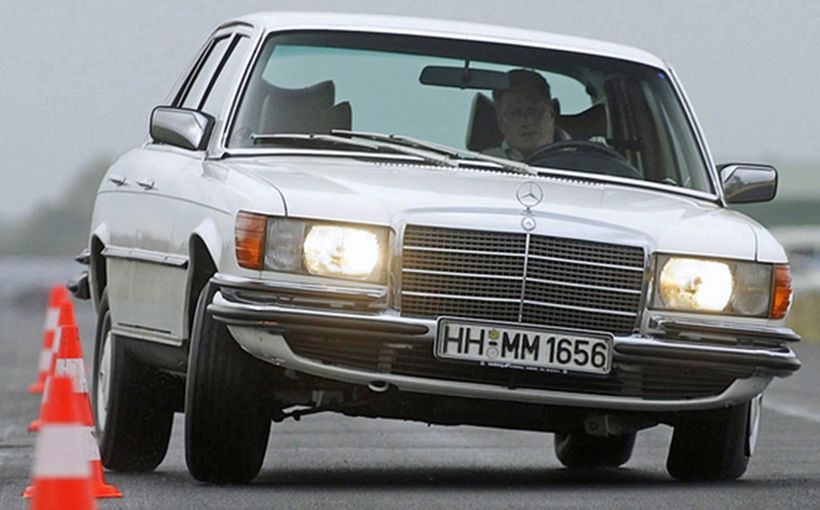Renault Dauphine Gordini: European rally star. Armstrong 500 champion.

There was a time in the 1950s when numerous car brands saw a rear-engine-rear-wheel-drive layout as the ideal mechanical template for small cars. One of these was Renault with its Dauphine sedan, which became the French marque’s first model to offer a hot ‘Gordini’ variant that proved to be a potent competition car in numerous countries - including Australia.
The Dauphine, launched in 1956, was immediately successful in European rally events, most notably Italy’s famous 1000-mile (1600km) Mille Miglia road race where a factory-entered team of five Dauphines fitted with special five-speed gearboxes filled the first four places in class.
Its competition credentials were also highlighted that year in France’s annual Tour de Corse on the craggy Mediterranean island of Corsica. The all-female team, comprising Belgian stars Gilberte Thirion and Nadege Ferrier, gave their male rivals a rally driving lesson on the island’s notoriously narrow and twisting roads in claiming a famous victory.
The release of a hot ‘Gordini’ version in 1957, named after the Italian-born but Paris-based tuning whiz who waved his magic wand over the cheeky French car, saw the Dauphine score more major victories.

These included the 1957 Tulip Rally, the 1958 Monte Carlo and Tour de Corse, the 1959 Alpine and Africa’s bruising Ivory Coast Rally. The hottest Dauphine of them all, the rare 1093 which you’ll read more about in this story, claimed yet another Corsica victory in 1962 before the new rear-engined R8 model released that year soon became Renault’s preferred competition car.
The Dauphine was not as prominent in European circuit racing, probably as much to do with timing as anything else, as the European Touring Car Challenge was not established until 1963 - a year after the R8’s release. Given the ETCC’s more liberal Group 2 rules, the Dauphine would also have faced stiff competition from giant killers like Abarth’s Fiat 600-based 850TC.
Both the Dauphine Gordini and 1093 were seen briefly in the first US Trans-Am series held in 1966, but their tiny sub-1000cc engines were no match for larger-engined Alfa Romeo and BMW rivals which dominated the under-2.0 litre class.
However, several years before that and half a world away in Australia, the Dauphine wrote its own chapter in the history of Australia’s greatest motor race, having competed in the first three Armstrong 500s held at Phillip Island from 1960 to 1962.
And in two of those three 500-mile (800km) races, for stock standard road cars on a notoriously brittle track surface, the fast and rugged French sedan in Gordini specification excelled, with two emphatic victories in the small car class.

Renault Dauphine Gordini
The standard Dauphine, released in 1956 to a warm reception in France, was a distinctly modern successor to Renault’s rear-engined 4CV (more commonly known as the 750 in Australia), launched in 1947 amongst the ruins of post-war Europe.
Known internally as Project 109 and 5CV, the name Dauphine (pronounced doe-fin) was chosen because in old French it was the title bestowed on the female heir to the throne. Given that Renault considered its iconic 4CV to be the ‘queen of the road’, it was a logical choice.
The Dauphine’s unitary body owed its fresh and modern aesthetics to Italian carrozzeria styling house Ghia and more specifically the talented Luigi Segre, particularly his smooth integration of the engine’s functional air intakes in the rear doors and heat-extracting vents on the rear fascia. This efficient flow of air would be of crucial importance in high performance Gordini versions to come.
The rear-mounted inline four, located longitudinally, was a larger capacity variant of the water-cooled Ventoux engine used in the 4CV. With a cubic displacement of 845cc, it delivered 27bhp and 49 ft/lbs of torque through a three-speed transaxle to the rear wheels.
With a top speed of 70mph (112km/h) the Dauphine had conventional wishbone/coil spring front suspension, simple swing-axle rear suspension, rack and pinion steering and four-wheel drum brakes with a kerb weight of around 660kg.

With 61 per cent of the sprung weight carried by the rear wheels, combined with the large camber change of swing-axle rear suspension, it had a natural tendency to oversteer when cornering at high speeds, which was well suited to the skilled enthusiast. So too was the excellent traction when getting its power to the ground, particularly on loose surfaces.
As mentioned earlier, the Dauphine was the catalyst for one of automotive history’s most important and successful partnerships. In this case, between Renault and Amedeo Gordini, who had earned the nickname ‘le sorcier de la mechanique’ or ‘the wizard mechanic’ due to the magical performance gains he could extract from standard engines.
After establishing the Gordini racing car company in the early 1950s, the business expanded in a new direction when Renault contracted Gordini to create sporting versions of its mass-produced models. This was a Renault marketing man’s dream, as the Gordini name was revered in France like Shelby in the USA or Brock in Australia.
The fact that the Dauphine was the first mass-produced Renault sedan to receive the Gordini treatment made it a special car. The fact that it also offered a big performance gain, without greatly compromising comfort and economy for everyday road use, was a testament to Gordini’s talents. The use of many standard parts also ensured its popularity with motor sport competitors, as it was affordable to maintain and repair.

The major differences were in the engine and transmission. The Gordini’s unique cylinder head featured hemispherical combustion chambers, higher compression ratio, wider valve angle, stronger springs and revised rocker gear matched with a more aggressive camshaft profile.
Head cooling was improved with greater coolant flow. Inlet and exhaust manifolds were also unique Gordini designs, with the standard Solex 28mm IBT carburettor replaced by a larger 32mm PICBT unit. With these modifications the standard engine’s 30bhp at 4250rpm jumped to 40bhp at 5000rpm – a whopping 33 per cent power increase.
The standard three-speed gearbox was also modified to become a four-speed unit, but like the three-speeder there was still no synchro on first gear. The Dauphine Gordini was claimed to achieve a 10 mph increase in top speed to 80mph (128km/h) which in the late 1950s was awfully fast for a sub-1000cc sedan that could also be driven to work each day.
True to his craft, Gordini - a born racer – was never satisfied with the Dauphine that carried his name and over the years continued to refine the original package with ongoing revisions of engine and suspension.

The hottest Gordini variant was the 1093, which was a genuine factory-built racer of which only 2,140 were built primarily to meet FIA homologation for motor sport but also in meeting strong customer demand. Unlike the regular Dauphine Gordini, this model was not sold in Australia.
The 1093 was only produced in 1962-63 and all examples were painted white with two thin blue stripes along the top of the bodywork from nose to tail. With its twin-carburettor engine cranking out 55bhp through a four-speed gearbox, the 1093 could top 90mph (144km/h) and also proved very popular and successful in a variety of motor sport disciplines.
The regular Dauphine and later the Gordini version were both sold in Australia, with local assembly taking place in Melbourne. In 1960 this meant the little Renault was also eligible for the first running of what was billed as the longest and richest race in the world for showroom stock, series production road cars.

1960 Armstrong 500
Being a new event with such a rich prize pool, the inaugural Armstrong 500 backed by shock absorber manufacturer Armstrong York Engineering, attracted the cream of Australian racing talent and a long entry list.
The 47-car field was spread across five classes comprising Class A (up to 750cc), Class B (751-1300cc), Class C (1301-2000cc), Class D (2001-3500cc) and Class E (over 3500cc). These represented brands as diverse as GM, Ford, BMC, Peugeot, Simca, NSU, VW – and Renault.
Class B attracted a healthy entry of locally available small sedans representing France, Germany and the UK, which included five Simca Arondes, four VW Beetles, two Triumph Heralds and a lone 105E Ford Anglia against three Renault Dauphines.

The form guide suggested that the three 845cc Renaults, with the smallest capacity engines in Class B, faced an uphill task in toppling their more powerful rivals, particularly the Simcas which in both A90 and P60 form had established an enviable reputation for sporty performance.
Even so, what the rear-engined Renaults lacked in cubic capacity they almost made up for with driving talent. Leo Geoghegan was paired with future ATCC champ Bill Pitt, Holden racing great Des West joined Ian ‘Pete’ Geoghegan and John Leighton and Alan Ling crewed the third entry.

As expected, the Simcas quickly ran away with Class B, crushing their rivals with a dominant performance that resulted in the French cars filling the first three places, after more than eight hours of racing on a disintegrating track surface.
One of the Heralds, three Beetles and the Anglia claimed the next five places respectively ahead of the three Renaults, which although proving tough and reliable in finishing the event were seriously outgunned in filling the final three spots. A sobering statistic was that the highest placed Dauphine finished 10 laps behind the winning Simca...

1961 Armstrong 500
Clearly, if the Renault Dauphine was to have a realistic chance of success in the Armstrong 500, it would need more speed and the answer was found in the hot Gordini version.
The 1961 race, held during the nation’s infamous credit squeeze and resulting economic recession, suffered a serious drop in entries. The number of competing classes was also reduced from five to four, now comprising Class A (over 2600cc), Class B (1601-2600cc), Class C (1001-1600cc) and Class D (under 1000cc).
This ensured the Simca Aronde was bumped up to the new Class C, leaving its rivals from the previous year to fight amongst themselves for the small car spoils. Returning for another crack at the 500 was a record entry of five 105E Ford Anglias, plus three Triumph Heralds, a single Morris Mini 850 and the first appearance of the hot Renault Dauphine Gordini.
In a full U-turn from the previous year, the Dauphine was now considered the pre-race favourite. Three were entered and again there were some ‘name’ drivers, including future Bathurst outright and class winner Brian Sampson teamed with Jim Gullan/John Connolly and crowd favourite and future ATCC champ Norm Beechey with Bill March. The third Gordini was shared by Les Park and Stan Martin.

“There was a great old battle between the Gordinis, the Anglias and (believe it) the Triumph Herald Coupes in Class D,” wrote Bill Tuckey in Chevron Publishing’s Australia’s Greatest Motor Race. “(The) Gullen/Sampson/Connolly Gordini a model of consistency, lapping in just under three minutes. The Anglias just couldn’t stand the pace.”
And so, after another eight gruelling hours of dodging potholes and flying debris on the increasingly brittle track surface, the Dauphine Gordini proved to be a fast and durable package.
The Sampson/Gullen/Connolly car finished one lap clear of the Beechey/March entry, in a dominant 1-2 result for Renault. The third-placed Triumph Herald was a further lap behind the French duo, which showed how strongly the Dauphine Gordinis had performed.

1962 Armstrong 500
The third and final 500-mile clash at Phillip Island attracted another bumper entry during a time of renewed optimism in a recovering economy.
A significant change for 1962 was that the four classes were now based on purchase price rather than engine capacity. So Class A was now catering for cars costing between £1251 and £2000, followed by Class B (£1051-£1250), Class C (£901-£1050) and Class D (less than £900).
Despite this change, the Dauphine Gordini remained in Class C. However, there was only one entered this time, with the previous year’s class winners Brian Sampson and John Connolly joining car owner/entrant/driver Rex Emmett.
Keen to cut the cheeky Renault down to size were four examples of the Simca Aronde, which as a result of the new price-based classes saw the two French marques as rivals again. However, the Gordini variant was a much faster car than the standard Dauphine which the Aronde had thrashed in 1960, as the hapless Simca crews would soon discover. Completing the Class C rollcall were two Hillman Minx entries and a lone Morris Major Elite.
There may have only been one Gordini but its strengths shone through in a hellish eight hours of racing, during which time the track broke up so badly that many windscreens and headlights were smashed, radiators holed and suspensions torn apart in the ordeal, which sent a number of cars to an early grave.

But through it all came the flying Sampson/Connolly/Emmett Gordini, powering home to another emphatic victory, this time four laps clear of the second-placed car - a Morris Major Elite driven by Alan Edney and Greg Fayers. In fact, following the race Edney lodged an official protest against the uncatchable class winner, but it was later dismissed and results were confirmed.
The Dauphine Gordini’s third and final appearance in the Armstrong 500 was in 1963, the first year it was held at its new permanent home of Mount Panorama, Bathurst as the fragile Phillip Island circuit was no longer suitable. However, it was trounced by newer and faster rivals including Renault’s replacement for the Dauphine, the R8.
It was the first and only appearance by a Dauphine in the Bathurst version of the annual 500-mile classic. And although it may have been a lack lustre curtain call, the Dauphine’s convincing success in Gordini form at Phillip Island had already cemented its enviable status as a two-time winner of Australia’s greatest motor race.









